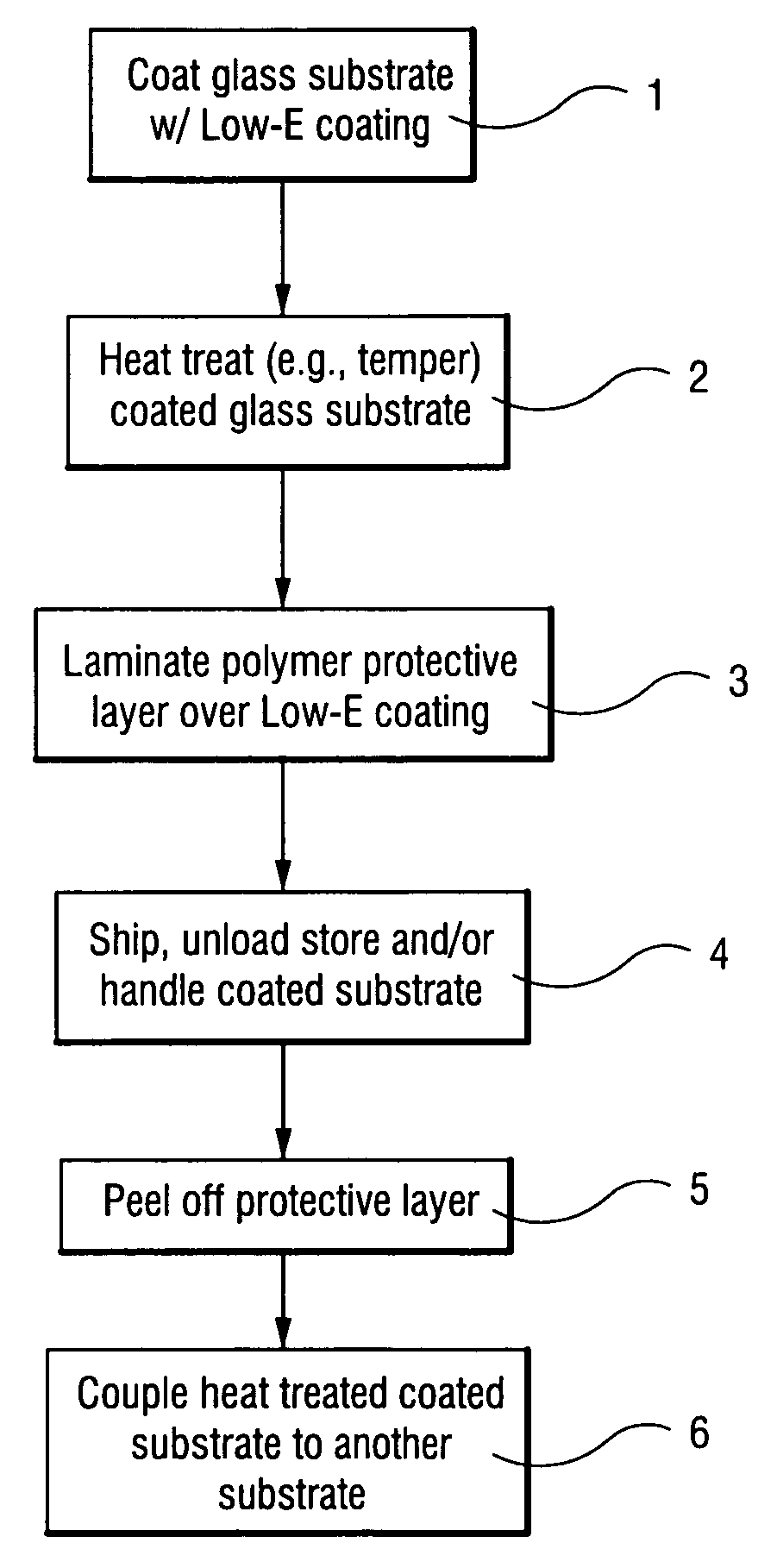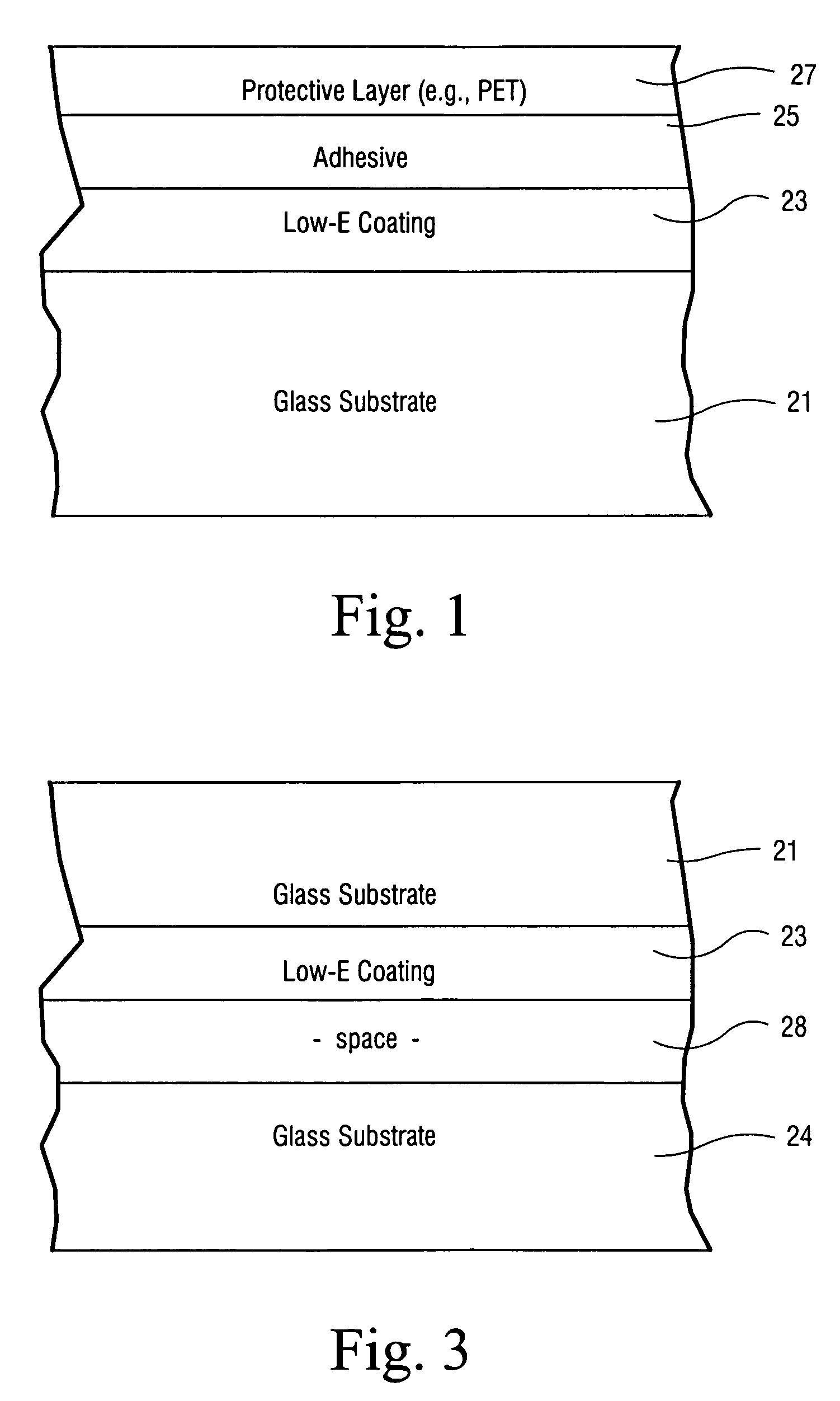Method of making heat treated coated glass article, and intermediate product used in same
a technology of heat treatment coated glass and intermediate products, which is applied in the directions of synthetic resin layered products, instruments, transportation and packaging, etc., can solve the problems of lucor powder not providing protection against corrosion damage, prone to damage to heat treatment coated glass substrate, and a significant cause of damag
- Summary
- Abstract
- Description
- Claims
- Application Information
AI Technical Summary
Benefits of technology
Problems solved by technology
Method used
Image
Examples
examples
[0042] For purposes of example only, and without limitation, eight (8) Example coated articles were made and tested. Each example coated article included a glass substrate 21 and low-E coating 23 as shown in FIG. 4. Referring to FIG. 4, a low-E coating 23 was sputtered onto a glass substrate 21. The materials used for the low-E coating 23 are listed below, in order from the glass substrate 21 outwardly; and the approximate thicknesses in the Example are listed in the right-hand column.
Example Materials / Thicknesses for Low-E Coating 23′
[0043]
LayerPreferredMoreGlassRange (Å)Preferred (Å)Example (Å)TiO210-150 Å 20-125 Å121 ÅSixNy 0-450 Å 70-300 Ån / a ÅZnOx10-300 Å 40-150 Å 90 ÅAg50-250 Å 80-120 Å 92 ÅNiCrOx10-100 Å 12-40 Å 37 ÅSnO2 0-1,000 Å200-700 Å597 ÅSixNy 0-450 Å 80-200 Ån / a ÅSnO230-250 Å 50-200 Å100 ÅZnOx10-300 Å 40-150 Å100 ÅAg50-250 Å 80-220 Å148 ÅNiCrOx10-100 Å 20-45 Å 36 ÅSnO2 0-750 Å 40-200 Å100 ÅSi3N4 0-750 Å 80-320 Å208 Å
[0044] All examples were heat treated (tempered in t...
PUM
| Property | Measurement | Unit |
|---|---|---|
| thick | aaaaa | aaaaa |
| thick | aaaaa | aaaaa |
| thick | aaaaa | aaaaa |
Abstract
Description
Claims
Application Information
 Login to View More
Login to View More - R&D
- Intellectual Property
- Life Sciences
- Materials
- Tech Scout
- Unparalleled Data Quality
- Higher Quality Content
- 60% Fewer Hallucinations
Browse by: Latest US Patents, China's latest patents, Technical Efficacy Thesaurus, Application Domain, Technology Topic, Popular Technical Reports.
© 2025 PatSnap. All rights reserved.Legal|Privacy policy|Modern Slavery Act Transparency Statement|Sitemap|About US| Contact US: help@patsnap.com



